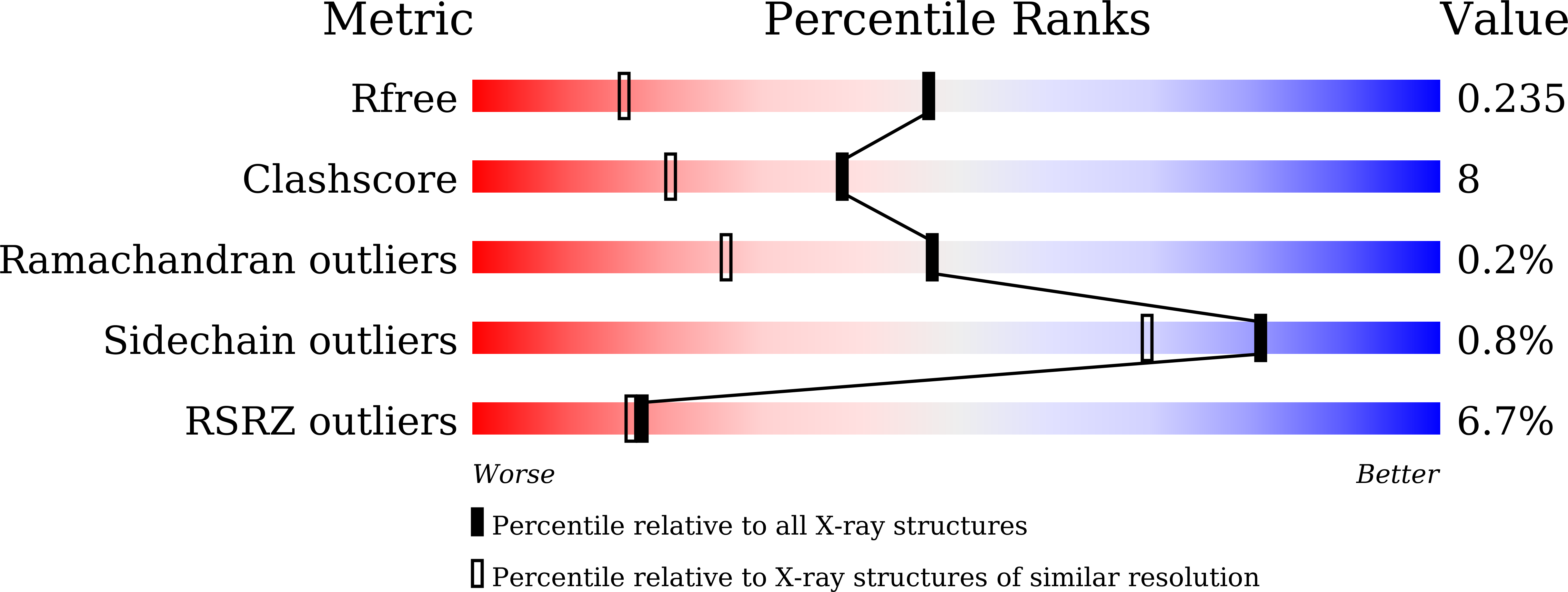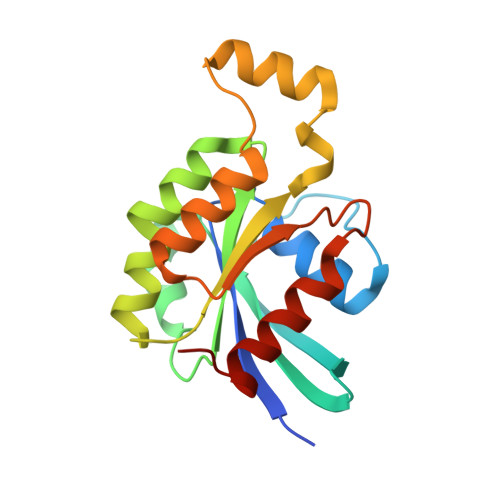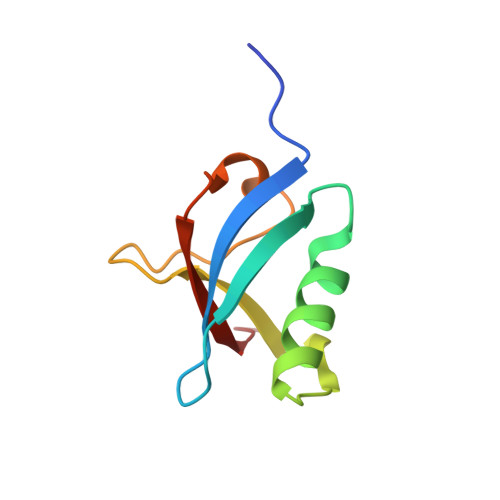Targeting Ras-binding domain of ELMO1 by computational nanobody design.
Tam, C., Kukimoto-Niino, M., Miyata-Yabuki, Y., Tsuda, K., Mishima-Tsumagari, C., Ihara, K., Inoue, M., Yonemochi, M., Hanada, K., Matsumoto, T., Shirouzu, M., Zhang, K.Y.J.(2023) Commun Biol 6: 284-284
- PubMed: 36932164
- DOI: https://doi.org/10.1038/s42003-023-04657-w
- Primary Citation of Related Structures:
6JPP, 7Y4A - PubMed Abstract:
The control of cell movement through manipulation of cytoskeletal structure has therapeutic prospects notably in the development of novel anti-metastatic drugs. In this study, we determine the structure of Ras-binding domain (RBD) of ELMO1, a protein involved in cytoskeletal regulation, both alone and in complex with the activator RhoG and verify its targetability through computational nanobody design. Using our dock-and-design approach optimized with native-like initial pose selection, we obtain Nb01, a detectable binder from scratch in the first-round design. An affinity maturation step guided by structure-activity relationship at the interface generates 23 Nb01 sequence variants and 17 of them show enhanced binding to ELMO1-RBD and are modeled to form major spatial overlaps with RhoG. The best binder, Nb29, inhibited ELMO1-RBD/RhoG interaction. Molecular dynamics simulation of the flexibility of CDR2 and CDR3 of Nb29 reveal the design of stabilizing mutations at the CDR-framework junctions potentially confers the affinity enhancement.
Organizational Affiliation:
Laboratory for Structural Bioinformatics, Center for Biosystems Dynamics Research, RIKEN, 1-7-22 Suehiro, Tsurumi, Yokohama, Kanagawa, 230-0045, Japan.

























